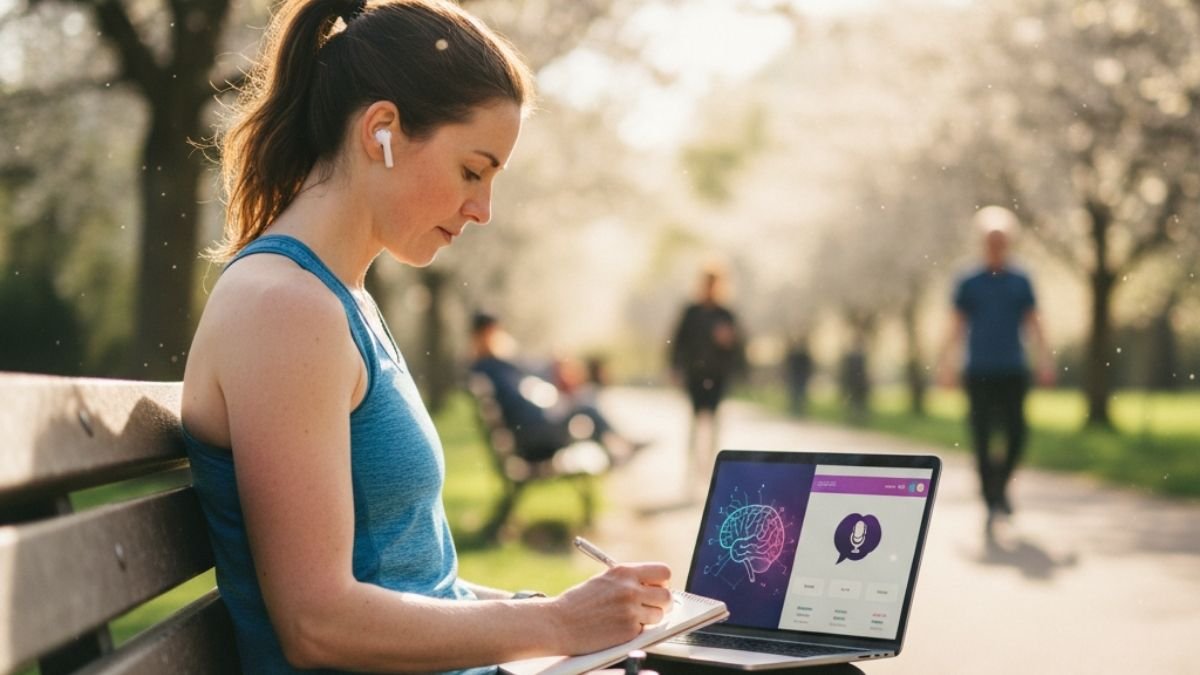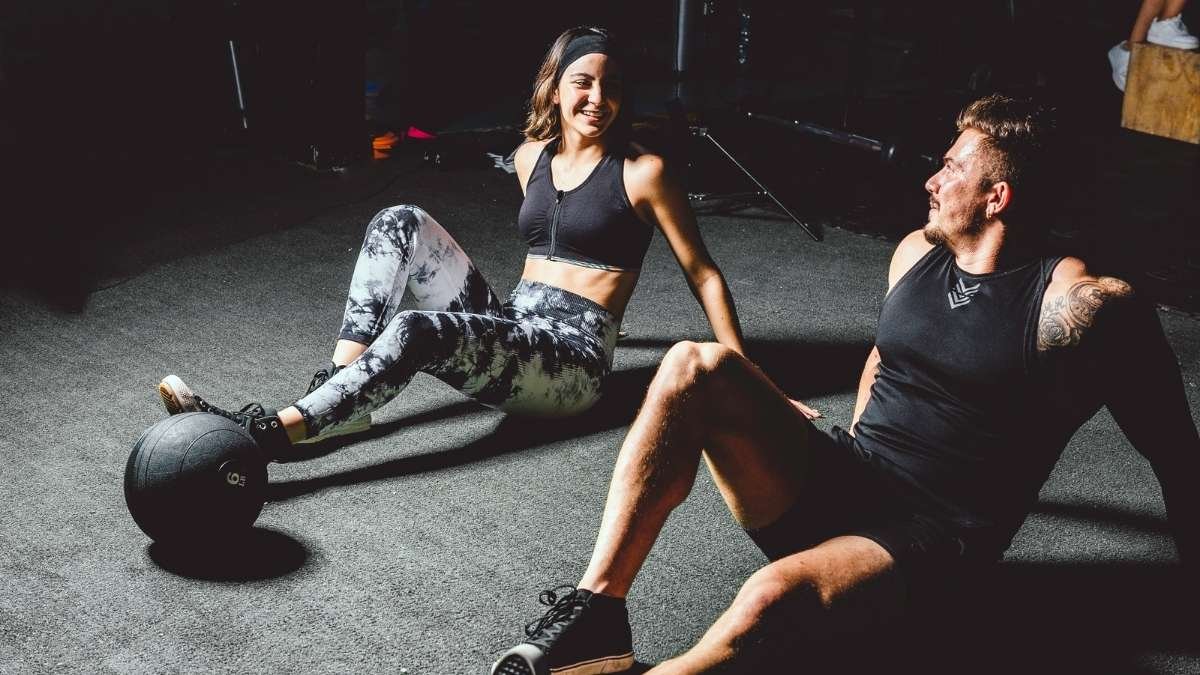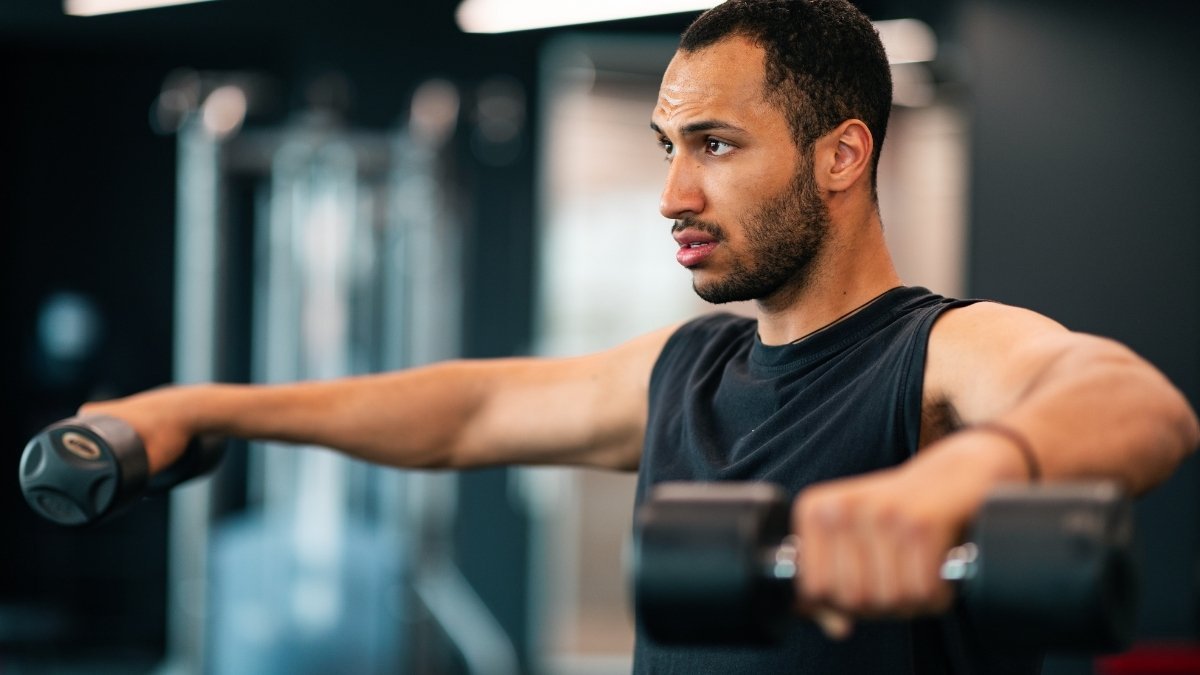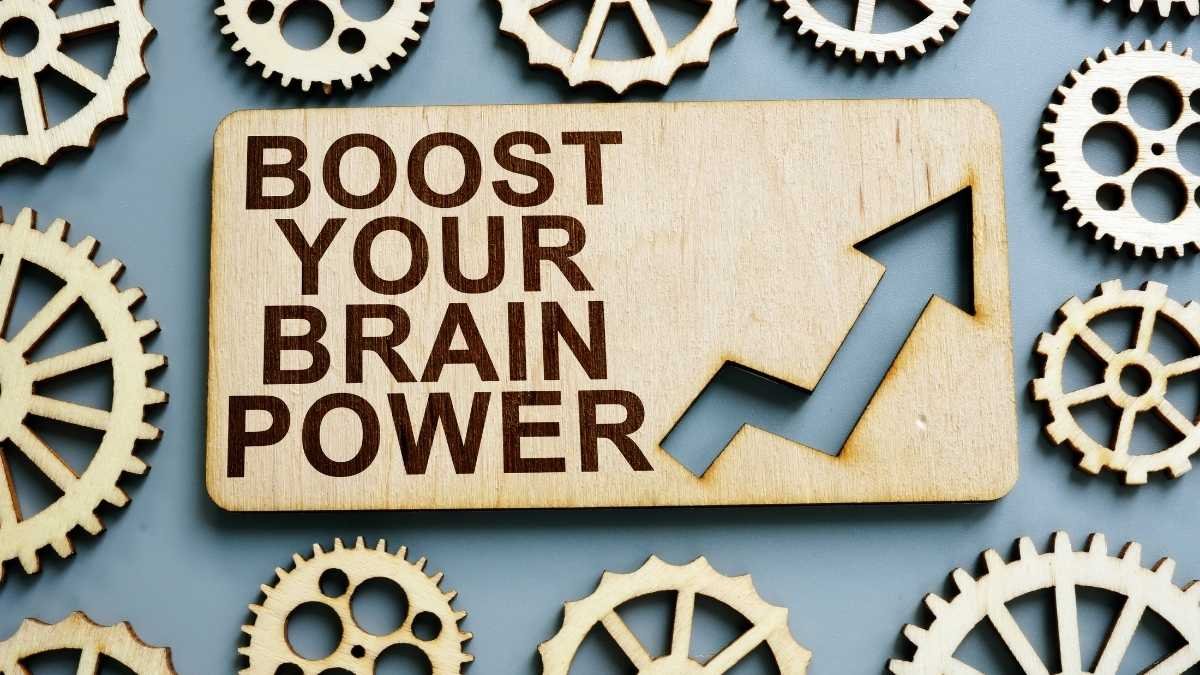
The word is right there, on the tip of your tongue, and then poof—it vanishes. Or you cross the threshold into a room, and the purpose for your journey completely disappears. It’s that frustrating mental static, that persistent brain fog that can make you feel like your edge is slipping. We all experience it, and when we do, it’s natural to worry that this might be our new normal.
But what if the key to a sharper, more resilient brain wasn’t a pricey supplement or a complex new routine? What if the secret was a simple, hidden “second step” you could add to the workout you’re already doing?
The truth is, exercise does more than just relieve stress or tone your muscles. For a brief, powerful period right after you move your body, your brain enters a state of supercharged readiness—a golden window of opportunity. By taking one small, intentional action during this window, you can significantly multiply the cognitive benefits of your sweat session. This isn’t just a life hack; it’s a science-backed user manual for optimizing your brain’s performance.
Your Brain on a Workout: More Than Just a “Runner’s High”

Let’s start with what’s actually happening in your head when you go for a brisk walk, a run, or a dance class. That feeling of clarity and calm you get afterward? That’s not just in your imagination. It’s a full-blown neurochemical party.
Think of it as your brain’s own custom-mixed cocktail for peak performance.
- Dopamine: This is the “You got this!” molecule. It’s the reward chemical that makes you feel motivated and satisfied, and it sharpens your ability to focus and solve problems.
- Serotonin: This is the mood-booster. It helps you feel calm, positive, and in control. And honestly, when you’re in a good mood, your brain is just more open to learning new things.
- Norepinephrine: This is your focus drug. It dials up your alertness and attention, cutting through the mental clutter.
This chemical cocktail creates what scientists call the Post-Exercise Cognitive Boost (PECB)—a “golden window” where your brain is literally primed to learn and grow. It’s flooded with oxygen-rich blood, and your neurons are firing on all cylinders. And this isn’t just a 20-minute flash in the pan. A 2024 study found that a good workout can boost your memory and focus for up to 24 hours, especially if you get a good night’s sleep.
But here’s the most important part. Exercise also triggers the release of a protein that’s basically Miracle-Gro for your brain cells: Brain-Derived Neurotrophic Factor (BDNF). BDNF is the master molecule of learning. It helps your existing brain cells survive, encourages the growth of new ones (a process called neurogenesis), and strengthens the connections between them.
The more you move, the more BDNF you produce. This is especially true in the hippocampus, your brain’s memory headquarters. In one incredible study, older adults who started a simple aerobic exercise program for a year actually grew their hippocampus by 2%. They effectively reversed one to two years of age-related brain shrinkage.
And you don’t have to run a marathon to get there. Neuroscientist Dr. Wendy Suzuki found real, measurable improvements in memory and focus from just two to three 45-minute sessions of aerobic exercise a week. She puts it beautifully: “every drop of sweat counts” because it helps build a “big, fat, and fluffy” hippocampus that’s more resilient to aging.
So, exercise preps the soil. It creates the perfect environment for growth. But here’s the question that changes everything: what seeds are you planting?
The ‘Second Step’: How to Actually Use Your Primed Brain

This is it. This is the secret. The “second step” is simply this: intentionally challenge your brain right after you exercise.
Think about it. You’ve just spent 30 or 45 minutes creating this perfect neurochemical state for learning. Your brain is buzzing with BDNF, dopamine, and norepinephrine. It’s practically begging for something new to work on. To just shower and move on with your day is like meticulously preparing a garden and then forgetting to plant anything.
By giving your brain a focused mental task during that golden window, you make the learning process stickier, faster, and more durable. You’re not just working out your body anymore; you’re strategically building a better brain. There are two main ways to do this.
1. The Sequential Approach: Workout First, Think Later

This is the most straightforward method. You finish your workout, and you immediately dive into a mentally engaging task for 15-30 minutes while the PECB is in full swing.
- Practice an instrument: This engages multiple brain areas at once—motor skills, hearing, and memory.
- Learn a language: Use an app or review flashcards. Your hippocampus is in prime condition to lock in new vocabulary.
- Play a strategy game: Chess, Sudoku, or even a complex card game like SET can give your executive functions a serious workout.
- Do focused work: Tackle a complex report, study for a test, or learn a new piece of software.
2. The Simultaneous Approach: Thinking on Your Feet (Dual-Tasking)

This is where things get really interesting. Dual-tasking means combining the mental and physical challenges at the same time.21 This might sound complicated, but you probably already do it.
- Simple combos: Walking while listening to a podcast and summarizing the key points out loud. Or counting backward from 100 by sevens.
- Integrated activities: Learning a new dance routine is a perfect example. Your body is moving, but your brain is working hard to remember the steps and stay on beat. The same goes for tai chi, tennis, or basketball—they all demand physical exertion and constant strategic thinking.
So, which one is better? The science is still evolving, but some research suggests that dual-tasking might have a slight edge, especially for training the real-world skills our brains need every day. Life, after all, is one big dual-task. You navigate a crowded grocery store while remembering your list. You cook dinner while talking to your family. By training this way, you’re building a brain that’s more efficient and resilient in the face of everyday chaos.
But honestly, don’t get hung up on which is “perfect.” Both are light-years better than just exercising on autopilot. The real takeaway is to start layering in cognitive challenges, in whatever way feels good to you.
Why Thinking on Your Feet Is How We’re Wired to Thrive

There’s a reason dual-tasking feels so powerful. It’s not a modern invention; it’s a return to our roots.
Think about our hunter-gatherer ancestors. For millions of years, survival depended on moving and thinking at the same time. They had to track animals (physical exertion) while navigating complex terrain, remembering landmarks, and planning their next move (intense cognitive work). Our brains didn’t evolve in a gym, with headphones on, staring at a screen. They were forged in a world that demanded constant, integrated mind-body engagement.
The Adaptive Capacity Model suggests that our modern, sedentary lives are an evolutionary mismatch. We’ve taken away the very stimulus our brains expect, and as a result, they can go into an energy-saving mode, which may contribute to cognitive decline.
So when we dual-task, we’re not just doing a clever brain hack. We’re re-introducing a fundamental signal to our brain that says: “Stay sharp. Stay engaged. We need you.” We’re tapping into an ancient blueprint for cognitive vitality.
And the clinical evidence is catching up. A 2024 randomized controlled trial with older adults found that a 16-week dual-tasking program led to significant improvements in cognitive function, with participants scoring much higher on the Montreal Cognitive Assessment (an average of 27.25 vs. 23.47 for the control group).
It all comes back to what the pioneers of neuroscience have told us for over a century. As the great Santiago Ramón y Cajal said, “Any man could, if he were so inclined, be the sculptor of his own brain”. Dual-tasking is simply one of the best chisels we’ve found.
Your Brain-Boosting Playbook: How to Actually Do This

Okay, enough theory. How do we put this into practice without hurting ourselves or feeling overwhelmed? It’s simpler than you think.
The Ground Rules
- Safety First. Always. If you’re trying to count backward while doing a lunge and you start to wobble, stop counting. Focus on your form. The cognitive challenge is the bonus, not the main event. Don’t risk an injury for a math problem.
- Start Easy. Don’t try to recite Shakespeare while learning to unicycle. Start by walking on a flat, safe surface while listening to an audiobook. As you get comfortable, you can gradually increase the difficulty of either the physical or mental task.
- Use the “Talk Test.” You should be able to perform the mental task with some effort, but it shouldn’t be so hard that you have to stop moving. If you can’t maintain your pace, the cognitive load is too high. Dial it back.
🧠 The Ultimate Brain-Body Workout Infographic 🏃♀️
Brisk Walking & Podcast Summary
Walk for 30 minutes. Every 5 minutes, pause the podcast and say the three main ideas you just heard out loud.
Dancing (e.g., Zumba)
Follow a Zumba class online. Your goal isn’t to be perfect, but to actively learn and execute the new moves.
Stationary Bike & Mental Math
While cycling at a steady pace, count backward from 300 by 7s. If you lose your place, just start again from where you left off.
Hiking an Unfamiliar Trail
Pick a well-marked trail you’ve never been on. Pay attention to the markers and your surroundings to stay on course.
Playing Tennis or Pickleball
Play a game and focus on strategy. Where is your opponent moving? Where should you place the ball next?
Tai Chi
Join a class and focus on the precise sequence of movements. It’s a moving meditation that’s incredibly powerful for the brain.
Here are a few ideas to get you started, from beginner to advanced. Mix and match, and find what you enjoy.
And if you prefer the sequential approach, just pick one of your favorite brain-challenging hobbies—a jigsaw puzzle, a language app, a musical instrument—and dedicate 20 minutes to it right after you cool down.
Let’s Bust Some Myths (and Save You Some Money)

Before we wrap up, let’s clear the air about some of the nonsense floating around about brain health.
- Myth 1: Brain training apps will make you a genius.
- The Truth: Look, these games can be fun, but the science is pretty clear: they mostly just make you better at playing the game. The skills rarely transfer to real-world thinking and problem-solving. You’re far better off learning a real-world skill like a new language or how to dance.
- Myth 2: You have to go hard or go home. No pain, no gain!
- The Truth: Please, let’s put this one to rest. Your brain doesn’t want you to suffer. In fact, a massive 2025 review of over 2,700 trials found that low- and moderate-intensity exercise often produced bigger cognitive benefits than high-intensity workouts. Consistency and enjoyment are what matter, not punishment.
- Myth 3: What’s good for your heart is different from what’s good for your brain.
- The Truth: This is completely false. Your brain is packed with blood vessels and uses about 20% of your body’s oxygen. Anything you do for your cardiovascular health—like exercising, eating well, and managing blood pressure—is directly and powerfully benefiting your brain.
- Myth 4: There’s a magic supplement for brain health.
- The Truth: It would be nice, wouldn’t it? But there’s just no solid evidence that over-the-counter supplements do much for your brain if you have normal nutrient levels. Save your money and eat real food, like a Mediterranean-style diet rich in veggies, nuts, and fish.
A Few Tools to Help You on Your Way
Sometimes, having the right tool can make all the difference in turning a new idea into a lasting habit. If you’re looking for some simple, effective ways to put these principles into practice, here are a few things that can help make your mind-body workouts more engaging and trackable.
1. SET: The Family Game of Visual Perception

This isn’t your average card game. SET is a fantastic workout for your brain’s executive functions, training you to spot patterns based on color, shape, and number. It’s a perfect activity for that post-exercise “golden window” and can be played solo or with family. It’s simple to learn but offers a surprisingly deep challenge.
2. Bananagrams

If you love word games, Bananagrams is a fast-paced, fun way to engage your language and processing skills. It’s like Scrabble but without the board and the waiting around. You race to build your own crossword grid, making it an excellent and energetic brain challenge for after a workout.
3. Agility Ladder

An agility ladder is a simple but incredibly versatile tool for dual-tasking. You can practice footwork drills to improve coordination and speed while simultaneously challenging your brain by counting backward, naming state capitals, or spelling words. It’s a great way to physically and mentally push yourself at the same time.
4. Fitbit Charge 6

The first step to all of this is consistent movement, and a good fitness tracker can be a great motivator. The Fitbit Charge 6 tracks your workouts, daily steps, heart rate, and sleep—all key components of brain health. Seeing your progress can provide the encouragement you need to keep going and build a strong foundation for these brain-boosting habits.
5. Healthy Brain, Happy Life by Wendy Suzuki, PhD

If you were inspired by Dr. Suzuki’s insights in this article, her book is the perfect next step. She dives deeper into the science of how exercise transforms the brain, blending her personal journey with practical “Brain Hacks” you can use every day. It’s an empowering read for anyone who wants to understand the science behind a better brain.
Your First Step to the ‘Second Step’
So, what does this all mean for you, right now?
It means that you have more control over your cognitive health than you probably thought. It means your brain isn’t a fixed, static thing that just declines over time. It’s adaptable. It’s plastic. As neuroscientist Andrew Huberman says, “Our brains are plastic, and we can change and shape them throughout our entire lives”.
The relationship between exercise and your brain isn’t just about cause and effect. It’s about priming and opportunity. Exercise primes your brain for growth. The second step—the cognitive challenge—is what seizes that opportunity.
Here’s your plan. It’s simple.
- Keep Moving: Aim for about 150 minutes of moderate activity a week. A 30-minute brisk walk, five days a week, is perfect. Remember, even light activity counts.
- Add a Layer: During your next walk, don’t just zone out. Listen to an interesting podcast. Plan your week. Take a new route and pay attention to the details.
- Be Curious: The brain loves novelty. The goal is to move beyond mindless repetition. A cognitively engaged workout is infinitely more powerful than just going through the motions.
Your next workout has a secret second half. A hidden level that unlocks a world of cognitive benefits. Don’t skip it. You’re not just exercising your body; you’re actively, brilliantly, sculpting your own brain.






